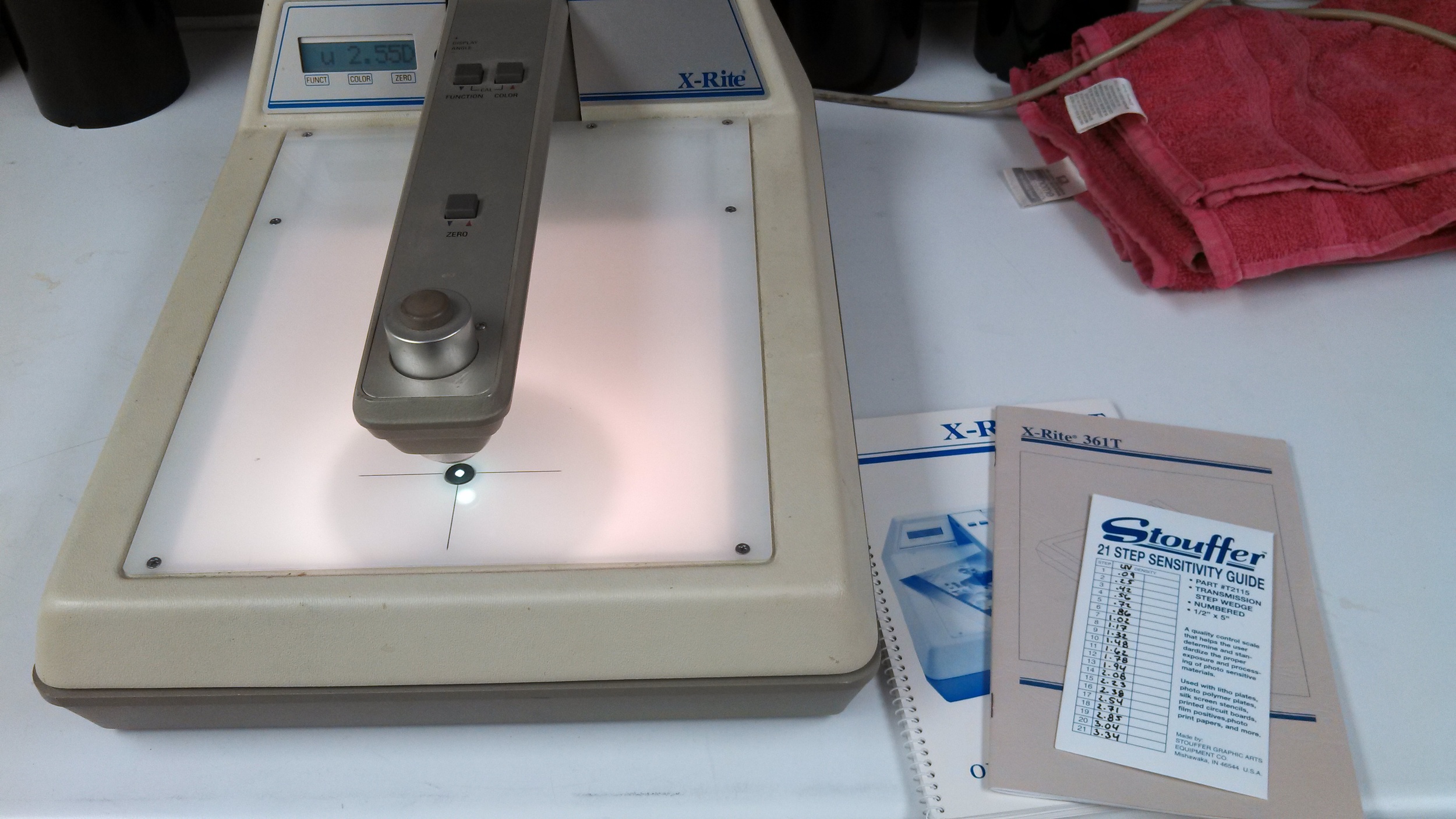Carbon Journal Day 30
Day 30: Don't Be Scared: Sensitometry Edition
This densitometer is about as old as I am, but still runs solid, and already making life easier!
Last week, I polled this blog's audience, and you guys responded in overwhelming favor of just getting a densitometer. As luck would have it, within 24 hours of the decision, an X-Rite 361T densitometer had been found (for a great price too)! Given my affinity for pyro stained negatives and alternative photographic processes, this specific model was highly recommended for its UV and orthochromatic density reading options. A fellow carbon printer and master Pt/Pd printer from Aurora, OH, Bob Herbst, has written many great guides to using the X-Rite 361T:
http://home.roadrunner.com/~bobherbst/articles/pyro_and_platinum_printing.pdf
Right out of the box, this densitometer took a whopping 15 minutes to get warmed up, calibrated, and UV tested for my Stouffer 21 step wedge. As is often said on The Film Photography Podcast, "Don't be scared!", this machine is quite easy to use. Sure, there's only three buttons and many confusing functions, but that's where the internet comes in handy! Unlike the early 1990's when this densitometer was in its hay-day, the convenience of the internet allows us to download manuals, troubleshoot with manufacturer via instant message, and even find old Kodak workbooks on the subject. What would otherwise be a nightmare to jump into, like most of the traditional photographic processes, the internet has made into an intuitive, self-instructing experience.
Later on this week, I'll be re-testing my B&W film developing and silver printing workflows, this time utilizing the step wedge and taking proper density readings. From there, the next logical step is to recalculate base exposure times + sensitizer concentrations via carbon transfer. The end-goal will be pairing negatives with a sensitizer concentration + tissue that will yield good looking prints with that signature long tonal scale that carbon is known for (and high relief if the negative is contrasty enough). A little hard work now will save me days of guess-work later.
Until next time, don't be scared, and check back for some cool results!
